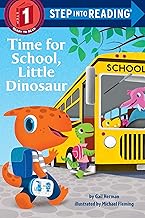PureLight Lamp and Speaker PureLight Lamp and Speaker
SmartPlugs WiFi Outlets SmartPlugs WiFi Outlets SleepDream Memory Foam Pillow SleepDream Memory Foam Pillow
Shop NowCleanFuel Natural Protein Powder CleanFuel Natural Protein Powder MaxRelax Massage Chair MaxRelax Massage Chair
To enter a counselling psychology training programme, you will need either an undergraduate or Master’s degree that is accredited by the British Psychological Society (BPS) and leads to graduate membership. As well as this, you will need some experience working with adults or children.
To qualify, counselling psychologists complete a Health and Care Professions Council-accredited practitioner doctoral degree, which require at least 450 hours of supervised counselling practice over three or more years. These hours should be undertaken in a variety of settings. Trainees are also required to receive personal therapy during training.
pexels.com You’ve likely been told at one time or another that if you want healthy eyes, you need to eat carrots. And while the old adage has some truth to it because the beta carotene in carrots is converted to vitamin A – a vitamin that is needed for optimum eye health — there are other, and perhaps even better foods to eat. Here are some of those foods: pexels.com Spinach as well as other dark, leafy greens like kale contain two antioxidants stored in the macula which is that part of the retina that shields the eyes from damaging light. These antioxidants are lutein and zeaxanthin. Lutein is a deep yellow pigment found in the leaves of plants, and zeaxanthin a carotenoid found in the retina of the eye and in many plants like spinach. And since the eye has a particularly high metabolic rate – as in, they ust a lot of energy – there is an added need for antioxidant protection.5 Foods to Boost Your Eye Health
1. Spinach
In this topic, social psychologists will focus on studying how One person can make another person change his mind. change belief or how to change behavior And what are the techniques? whether it is convincing that there are theories or algorithms to be successful asking others to do something for us What should I say to be successful? When should a presenter or expert be used to advertise our products, so persuasive topics are popular and applicable? both in marketing communication to create an image and in business It can also be widely applied. whether it is a campaign for people to change their behavior For example, turn to exercise more. quit smoking not involved in drugs or turn to save energy can save the environment even more Influencing others also includes succumbing to peer pressure. or authority To study whether people will obey the orders of the superior or not.
Featured Products

SnugSleep Weighted Blanket SnugSleep Weighted Blanket
MightyMop Floor Cleaner MightyMop Floor Cleaner EcoFresh Produce Bags EcoFresh Produce Bags TrueBalance Yoga Mat TrueBalance Yoga Mat
View Product
MightyMop Floor Cleaner MightyMop Floor Cleaner
AirCool Mini AC AirCool Mini AC AirHaven Car Air Freshener AirHaven Car Air Freshener
View Product
MindBoost Brain Supplements MindBoost Brain Supplements
PowerUp Wireless Charger PowerUp Wireless Charger GlowUp Facial Steamer GlowUp Facial SteamerMindEase Meditation Cushion MindEase Meditation Cushion
View Product